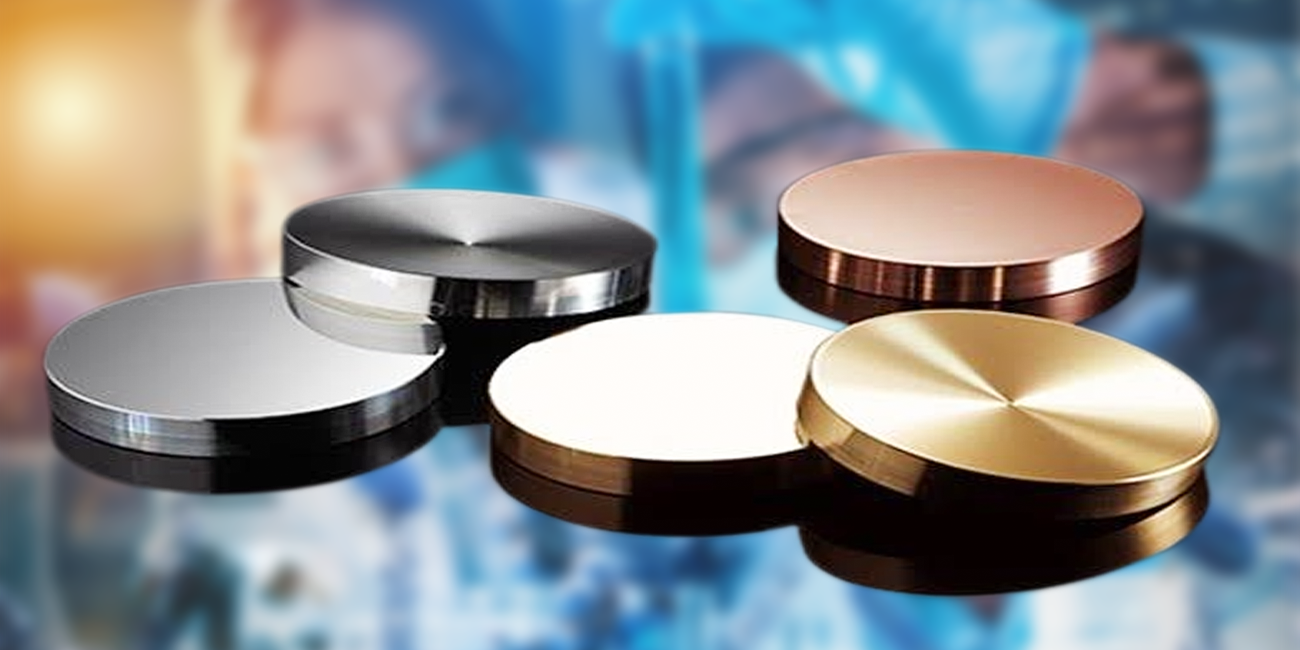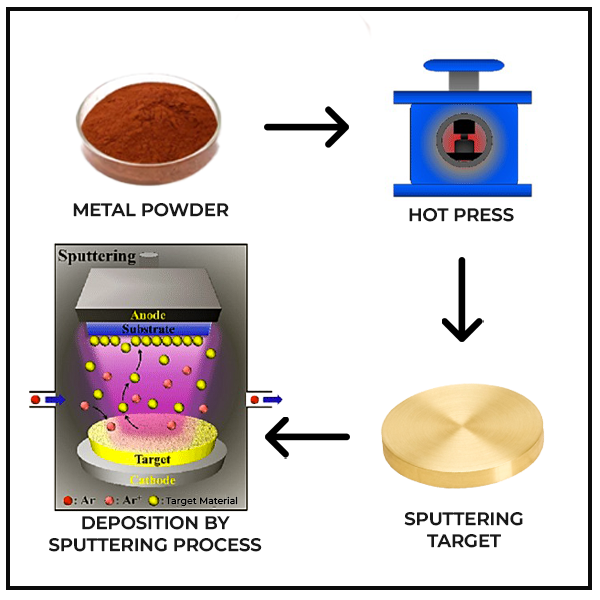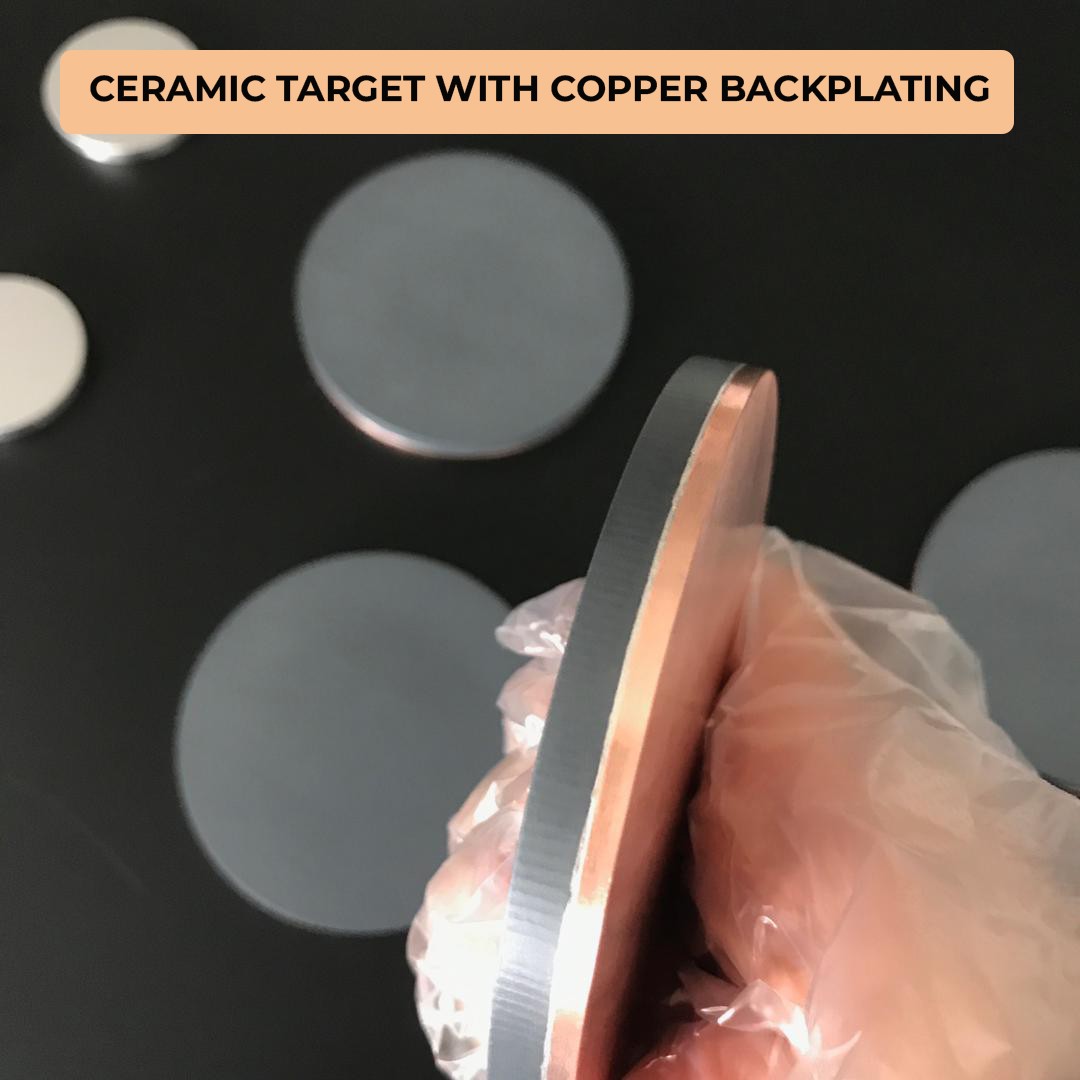Ultrananaotech
Sputtering Targets: Enhancing Thin Film Deposition for Advanced Applications
Introduction
In thin film deposition, sputtering targets play a crucial role in creating high-quality coatings for various applications. Sputtering deposition, a widely-used process, involves the coating of a surface with a thin layer of material, ranging from fractions of a nanometre to several micrometers in thickness. This technique is essential in the manufacturing of modern electronic and optical components. In this comprehensive guide, we will explore the different types of sputtering targets, their composition, fabrication methods, and the diverse range of applications they serve.
Understanding Sputtering Deposition
Sputtering uses energized atoms and energized atoms are created by plasma. These plasmas are generally non – reactive. When we apply high negative electric voltage to the target and then the plasma becomes ionized and it attracted towards the target and the atoms are bombarded from a target material. These ejected atoms then land on the substrate, forming a thin film. The whole process takes place in the vacuum chamber. Unlike other techniques, sputtering deposition does not require the target to be heated, making it highly flexible for a wide range of applications. The targets themselves can consist of pure elements, compounds, or mixtures, depending on the desired properties of the thin film.
Process of Sputtering Deposition
Types of Sputtering Targets
Sputtering targets come in various forms and compositions to cater to specific requirements. Let’s explore some of the most common types:
1. Standard Targets: These targets are available in sizes ranging from 1″ to 8″ in diameter and from 2mm to 10mm thick. They are widely used for general thin film deposition purposes.
2. Alloy Sputtering Targets: Alloy targets are composed of two or more metallic elements, combined to achieve specific properties and characteristics. These targets are highly versatile and find applications in areas such as catalysis and advanced material synthesis.
3. Oxide Sputtering Targets or Ceramic Targets: Oxide sputtering targets consist of metal oxides and offer excellent stability and durability. They are commonly used in the production of ceramic coatings, optical films, and electronic devices.
4. Metal Boride Sputtering Targets: Boride targets are composed of metal boride compounds and are known for their exceptional hardness, wear resistance, and high melting points. These targets find applications in the manufacturing of cutting tools, wear-resistant coatings, and diffusion barriers.
5. Metal Carbide Sputtering Targets: Carbide targets are made of metal carbide compounds and are valued for their high melting points, hardness, and resistance to wear. These targets are commonly used in the production of wear-resistant coatings, cutting tools, and decorative films.
6. Fluoride Sputtering Targets: Fluoride targets consist of metal fluoride compounds and are known for their optical properties, such as high transparency in the infrared region. These targets are utilized in the manufacturing of optical coatings, sensors, and photovoltaic devices.
7. Nitride Sputtering Targets: Nitride targets are composed of metal nitride compounds and possess excellent hardness, wear resistance, and high-temperature stability. They are widely employed in the production of wear-resistant coatings, decorative films, and electronic devices.
8. Selenide Sputtering Targets: Selenide targets consist of metal selenide compounds and are utilized for applications in optoelectronics, semiconductors, and photovoltaics. These targets offer unique electrical and optical properties.
9. Silicide Sputtering Targets: Silicide targets are composed of metal silicide compounds and are known for their excellent thermal stability, electrical conductivity, and compatibility with silicon-based substrates. They find applications in the production of integrated circuits, electronics, and solar cells.
Customized Sputtering Targets for Precise Thin Film Deposition
To achieve the desired thin film properties, it is often necessary to customize sputtering targets. Standard targets may not fulfil specific composition requirements, especially for complex materials like metallic glass alloys. In such cases, custom-made targets are fabricated to ensure the deposition of high-quality thin films.
Fabrication of custom sputtering targets involves specialized techniques such as arc-melting or radio-frequency melting of a mixture of metals in a vacuum or inert-gas atmosphere. Another approach is to mix powders of different metals and sinter the mixture at an elevated temperature under high pressure in a die of required dimensions. These custom targets enable precise control over the composition and properties of the resulting thin films.
Advantages of High-Quality Sputtering Targets
Utilizing high-quality sputtering targets offers several advantages in thin film deposition processes. Let’s explore some of these benefits:
• Enhanced Uniformity and Reproducibility – Sputtering targets with fine-grained structures ensure the deposition of uniform thin films with consistent properties across the entire coated surface. This uniformity is crucial in applications that demand high precision, such as optical coatings, semiconductor devices, and display technologies. The use of high-quality targets also enhances reproducibility, allowing for consistent thin film production over multiple deposition runs.
• Wide Range of Material Options – Sputtering targets are available in a wide range of materials, including precious metals, pure metals, alloys, ceramics, intermetallic, and compounds. This diverse selection enables the deposition of thin films with specific compositions and properties tailored to the desired application. From standard elements to custom compounds, the material options are vast, providing flexibility and versatility in thin film deposition processes.
• High Purity and Cleanliness – High-purity sputtering targets are essential for achieving pristine thin films in applications where impurities can adversely affect performance. The use of high-purity source materials minimizes the presence of impurities in the resulting coatings, ensuring superior quality and performance. Additionally, targets with superior surface cleanliness reduce the occurrence of spitting, enhancing the overall deposition process.
• Innovative Technologies for Enhanced Performance – To further improve thin film deposition processes, innovative technologies have been developed. For instance, Materion’s patented VCTTM (Variable Crystal Texture) sputtering targets offer decreased grain size, resulting in improved film properties such as adhesion, density, and uniformity. These advancements contribute to enhanced performance and efficiency in various applications, ranging from electronics to energy storage.
Applications of Sputtering Targets
Sputtering targets find applications in a wide range of industries and technologies. Let’s explore some of the key areas where sputtering deposition is utilized:
• Electronics and Semiconductor Industry – Sputtering targets are extensively used in the electronics and semiconductor industry for the production of integrated circuits, thin film transistors, and magnetic storage devices. They enable the deposition of precise thin films with controlled electrical and optical properties, contributing to the advancement of electronic devices and components.
• Optics and Photonics – The optics and photonics industry heavily relies on sputtering targets for the deposition of coatings on optical components such as lenses, mirrors, filters, and waveguides. These coatings enhance optical performance, providing properties like anti-reflection, high reflectivity, and polarization control. Sputtering deposition ensures the production of high-quality optical coatings with excellent uniformity and durability.
• Energy and Photovoltaic – In the field of energy and photovoltaic, sputtering targets play a vital role in the production of thin film solar cells, fuel cells, and energy storage devices. By depositing precise thin films on these devices, sputtering enables efficient energy conversion and storage. The use of high-purity and specialized targets ensures optimal performance and longevity of these energy-related technologies.
• Decorative Coatings – Sputtering targets are employed in the production of decorative coatings on various surfaces, including automotive parts, consumer electronics, and architectural glass. These coatings provide aesthetic appeal, durability, and resistance to wear and corrosion. By utilizing specialized targets and precise deposition techniques, manufacturers can achieve consistent and visually appealing decorative coatings.
• Research and Development – Sputtering targets are instrumental in research and development activities, enabling scientists and engineers to explore novel materials, investigate new deposition techniques, and develop innovative technologies. Customized targets with specific compositions and properties allow for precise control and experimentation, facilitating advancements in various scientific disciplines.
Sputtering Target Services and Support
To ensure the seamless integration of sputtering targets into thin film deposition processes, several services and support options are available:
•Target Bonding – Complete bonding services are offered by some suppliers, allowing for the secure attachment of targets to backing plates. This ensures stability and efficient heat transfer during the deposition process. Bonding services provide a comprehensive solution, enabling customers to obtain fully assembled sputtering targets ready for use.
•Target Recycling and Reclamation – To minimize waste and optimize resource utilization, target recycling and reclamation services are available. These services involve the recovery of valuable metals from used or damaged targets, reducing the environmental impact and offering cost savings. By reclaiming precious and rare materials, the sputtering target lifecycle is extended, promoting sustainability in thin film deposition processes.
Conclusion
Sputtering targets are integral to the production of high-quality thin films in various industries and research fields. From standard elements to customized compositions, sputtering targets offer versatility, precision, and control in thin film deposition processes. With advancements in materials, fabrication techniques, and support services, the capabilities of sputtering targets continue to expand, facilitating advancements in electronics, optics, energy, and more. By harnessing the potential of sputtering deposition and utilizing high-quality targets, researchers and manufacturers can unlock new possibilities for advanced applications, paving the way for technological innovation.
For more information about Sputtering Targets and it’s uses you can contact us and visit us at ultrananotec.com
 +91-8800903073, 8452810712
+91-8800903073, 8452810712


